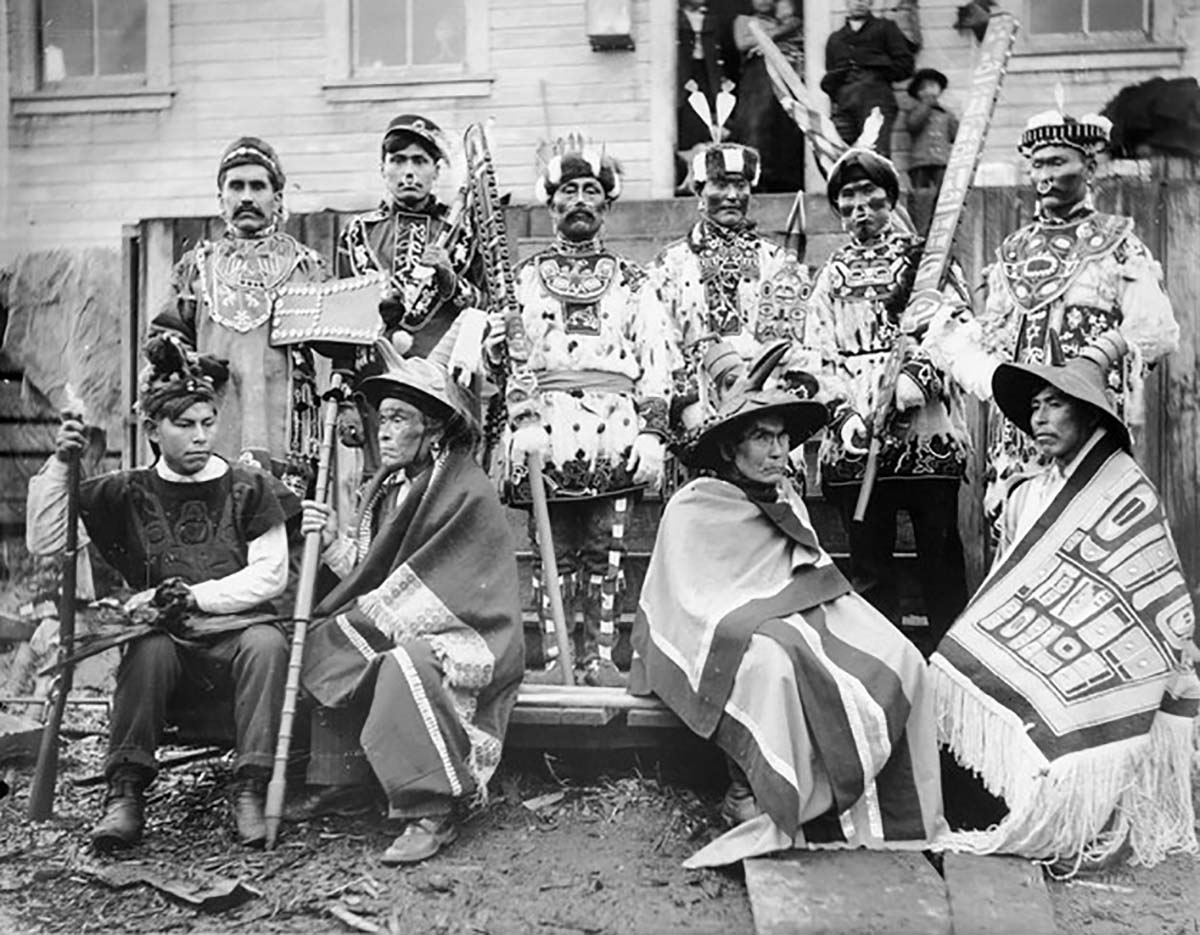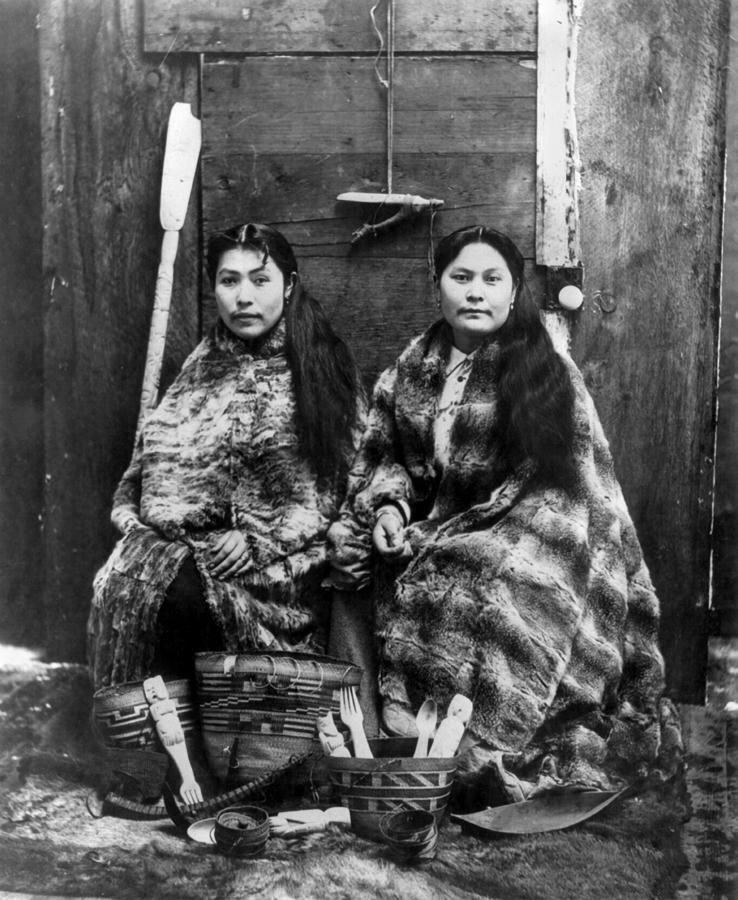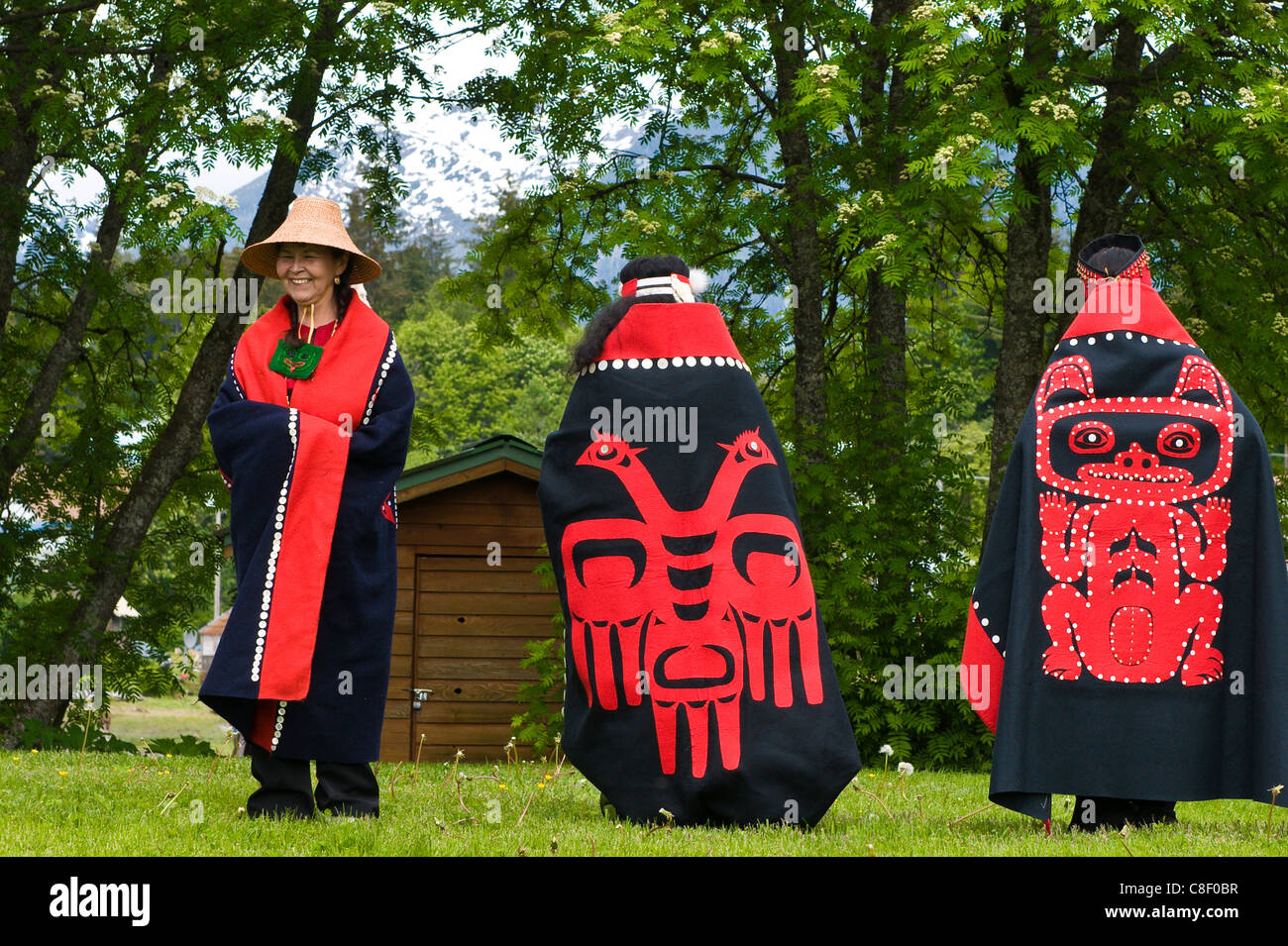Anthropology
Related: About this forumLost 19th-century Tlingit fort discovered in Alaska
By Mindy Weisberger - Senior Writer an hour ago
The battle was a pivotal moment in Tlingit history — and in Russia's colonization of the Americas.

Historical drawing of the sapling fort by Y. Lisyansky.
(Image: © Copyright Antiquity Publications Ltd/Courtesy of the U.S. National Park Service, Sitka National Historical Park)
The remains of a long-lost 19th-century fort in Alaska, once the site of a fierce battle between First Nations clans and Russian soldiers, has been revealed by radar scans. It was a stronghold of the Tlingit people, a Northwest Coast Indigenous group, and it was the last fort to fall before Russia colonized the land in 1804, launching six decades of occupation.
The Russians first invaded Alaska in 1799, and three years later Tlingit clans successfully repelled their would-be colonizers. Tlingit fighters then fortified their territory against future Russian attacks by building a wooden fort they named Shís'gi Noow — "the sapling fort" in the Tlingit language — at a strategic spot in what is now Sitka, Alaska, at the mouth of the peninsula's Indian River.
But two years later, Shís'gi Noow gave way to the second wave of Russian invaders; the Tlingit abandoned the fort, and the Russians destroyed it. For more than 100 years, historians and archaeologists searched for clues about where it once stood, identifying several promising locations. But the recent combination of two ground-scanning methods have finally revealed the trapezoid outline of the fort's perimeter, researchers reported in a new study.
On Oct. 1, 1804, the Russians launched a fresh attack on the fort, aided by allies from the Aleut and Alutiiq Indigenous groups, and the Tlingit promptly decimated their foes. But the Tlingit's reserve gunpowder blew up in a supply canoe; knowing that they could no longer defend the fort, the Tlingit defenders began planning their retreat, and by the time the Russians regrouped for a second assault, the stronghold was already abandoned, according to the U.S. National Parks Service (NPS).
More:
https://www.livescience.com/19th-century-tlingit-fort-alaska.html
~ ~ ~

















Atticus
(15,124 posts)and resilient tribe. (Or clan?---not sure which is appropriate)
Judi Lynn
(160,515 posts)The most fascinating find of my life was from a library in the early 1970's, the photographs (a lifetime work for him) assigned as a national project to Edward Sheriff Curtis. I tried to find a copy in bookstores, it was not available. Finally had to get a local bookstore to make a special purchase and never wanted to part with the book, ever again. Bought others decades later to give to meaningful people I felt would appreciate them.
It's important to remember the photos were taken at a terrible time in history in the lives of the subjects who sat or posed for his photos. That's why you will not see any joyous expressions on their faces. I would hope he treated them respectfully, which was only right, and didn't make them feel exploited.
There are MANY of these photos, if you haven't seen them, yet:
Wikipedia:
https://en.wikipedia.org/wiki/Edward_S._Curtis
https://www.edwardscurtis.com/
https://www.smithsonianmag.com/history/edward-curtis-epic-project-to-photograph-native-americans-162523282/
Atticus
(15,124 posts)partial backdrop of that towering wall of stone reminded me what puny creatures we are and how much courage mere survival often requires.
Thank you again.
Judi Lynn
(160,515 posts)Most people have clearly developed total tunnel vision, wouldn't you imagine?
Relating to your life in such a different framework would be an impossible leap for so many.
Overwhelming.
Thank you.
Bayard
(22,051 posts)Very handsome people. I've always loved the artistry of the Pacific Northwest. Never thought about them fighting Russians....
Thanks for posting!
![]()
Judi Lynn
(160,515 posts)The news about Russians hit me the same way. Never knew one thing about it, not even a hint.
Deeply impressive.
Thank you, Bayard.
What Happened When a Hollywood Star Stole a Tlingit Native American Totem Pole
In 1931, Hollywood actor John Barrymore stole a Tlingit totem pole from the southeast coast of Alaska. Returning it to its rightful home took 84 years.
By
Olivia Land
July 29, 2020

The Totem pole stolen by John Barrymore (left) with Chilkat Tlingit men and boys dressed in for a dance ceremony in Klukwan, Alaska, 1895 (right)
The Tlingit (pronounced klink-it) have lived in southeastern Alaska for over ten thousand years and their territory expanded further down the west coast of North America. However, the incursion of 19th-century colonizers resulted in the occupation of their land and the theft of their cultural objects and heritage. One of the most famous crimes was committed by actor John Barrymore in 1931 when he stole a Tlingit totem pole.
History Of The Tlingit In Alaska

A group Sitka Tlingit pose outside their village by Eadweard James Muybridge, 1868, via The Alaska State Library Historical Collections, Juneau
More:
https://www.thecollector.com/tlingit-totem-pole/
stopdiggin
(11,295 posts)Judi Lynn
(160,515 posts)Karadeniz
(22,493 posts)Judi Lynn
(160,515 posts)Once undertaken, the path doesn't lead back home the same way. So much becomes clearer.
Thank you, Karadeniz.
Judi Lynn
(160,515 posts)Judi Lynn
(160,515 posts)Judi Lynn
(160,515 posts)By Mindy Weisberger - Senior Writer a day ago
The battle was a pivotal moment in Tlingit history — and in Russia's colonization of the Americas.
The remains of a long-lost 19th-century fort in Alaska, once the site of a fierce battle between First Nations clans and Russian soldiers, has been revealed by radar scans. It was a stronghold of the Tlingit people, a Northwest Coast Indigenous group, and it was the last fort to fall before Russia colonized the land in 1804, launching six decades of occupation.
The Russians first invaded Alaska in 1799, and three years later Tlingit clans successfully repelled their would-be colonizers. Tlingit fighters then fortified their territory against future Russian attacks by building a wooden fort they named Shís'gi Noow — "the sapling fort" in the Tlingit language — at a strategic spot in what is now Sitka, Alaska, at the mouth of the peninsula's Indian River.
But two years later, Shís'gi Noow gave way to the second wave of Russian invaders; the Tlingit abandoned the fort, and the Russians destroyed it. For more than 100 years, historians and archaeologists searched for clues about where it once stood, identifying several promising locations. But the recent combination of two ground-scanning methods have finally revealed the trapezoid outline of the fort's perimeter, researchers reported in a new study.
On Oct. 1, 1804, the Russians launched a fresh attack on the fort, aided by allies from the Aleut and Alutiiq Indigenous groups, and the Tlingit promptly decimated their foes. But the Tlingit's reserve gunpowder blew up in a supply canoe; knowing that they could no longer defend the fort, the Tlingit defenders began planning their retreat, and by the time the Russians regrouped for a second assault, the stronghold was already abandoned, according to the U.S. National Parks Service (NPS).
More:
https://www.livescience.com/19th-century-tlingit-fort-alaska.html?utm_source=notification
Judi Lynn
(160,515 posts)November 29th, 2017, 12:27PM / BY Eric Hollinger & Nick Partridge

Tlingit Killer Whale Clan Hat digitized and repatriated by the Smithsonian’s National Museum of Natural History in 2005. (Nick Partridge, Smithsonian)
The Smithsonian regularly works with several indigenous clans and communities to apply 3D digitization and replication technologies to cultural preservation and restoration issues. This past fall, as Tribal Liaison with the Repatriation Office at the Smithsonian’s National Museum of Natural History, I continued this effort with the Tlingit tribe of southeastern Alaska.
With equipment support from the Smithsonian’s Digitization Program Office and joined by University of North Carolina-Chapel Hill student and photogrammetry specialist Abigail Gancz, SIE Model Maker Chris Hollshwander, and Smithsonian Public Affairs Specialist Nick Partridge, I attended the 2017 Tlingit Sharing Our Knowledge Conference. Held at the Sitka Fine Arts Camp in October, the conference offered an ideal forum to further foster our relationship with the Tlingit people and present new opportunities for collaboration.
While at the conference, our team took over a room for four days and demonstrated 3D digitization and replication technology. Clan leaders brought in clan hats, helmets, headdresses and rattles to have them digitized using photogrammetry—a technique that merges data from hundreds of individual digital images--to construct 3D models. During the conference, the Tlingit received seven repatriated pieces, including several helmets and headdresses returned by the Smithsonian’s National Museum of the American Indian.
At the request of the clans, we worked quickly to digitize these objects and archive the data as a form of insurance. Digital data from these scans can be used to restore or replace the hats if lost or damaged in the future, a key concern to clan elders as, in 1944, the Tlingit village of Hoonah burned and only two clan crests survived. After the fire, Tlingit carvers replaced several of the hats working from memory and perhaps a few old photos. Digital scans of such at.óow—clan crest objects—provide peace of mind that Tlingit artists could use the files or 3D technology to faithfully reproduce lost or damaged objects.
More:
https://www.smithsonianmag.com/blogs/national-museum-of-natural-history/2017/11/29/3d-technology-key-preserving-indigenous-cultures/
Judi Lynn
(160,515 posts)
Long-Lost Indigenous Fort Used To Resist Russian Colonization Discovered In Alaska
By Tom Hale
29 JAN 2021, 12:23
Along the southeastern coast of Alaska, archaeologists have discovered the site of a long-lost fort used by Indigenous people as a last wall of defense against colonization from Russia 200 years ago.
The fort can scarcely be seen today with the naked eye, but it was recently revealed by a team of archaeologists from Cornell University and the US National Park Service using cutting-edge geophysical imaging techniques and ground-penetrating radar. Their findings were recently reported in the journal Antiquity.
The fort was built by the Tlingit Indigenous people of the Pacific Northwest Coast of North America on a peninsula in modern-day Sitka, Alaska, and is still an important cultural symbol of their resistance to colonization In 1799, when the Russian Empire sent a small army to take over Alaska to exploit the region’s resources, namely animal fur, and to compete with other European colonial powers.
The initial conquest was not as straightforward as Russia had hoped, however. The Tlingit successfully defeated the Russian invaders in 1802 and expelled them from Alaska. Realizing this was unlikely to be the last they’d see of them, the Tlingit built the fort near the mouth of the Kaasdaheen, now known as Indian River, and armed themselves with guns, cannons, and gunpowder bought from British-American traders. It became known as Shís’gi Noow, meaning “sapling fort” in the Tlingit language.
More:
https://www.iflscience.com/editors-blog/longlost-indigenous-fort-used-to-resist-russian-colonization-discovered-in-alaska/